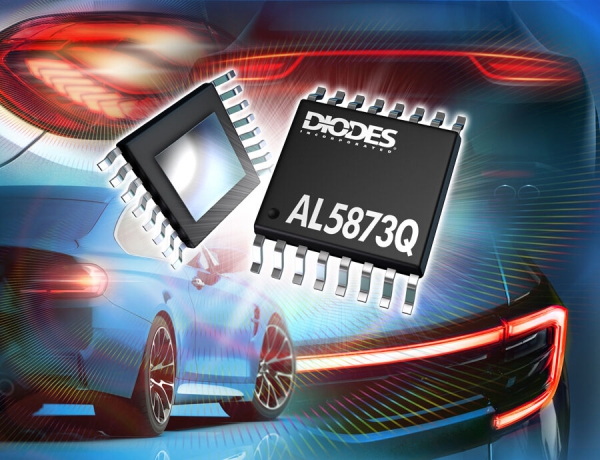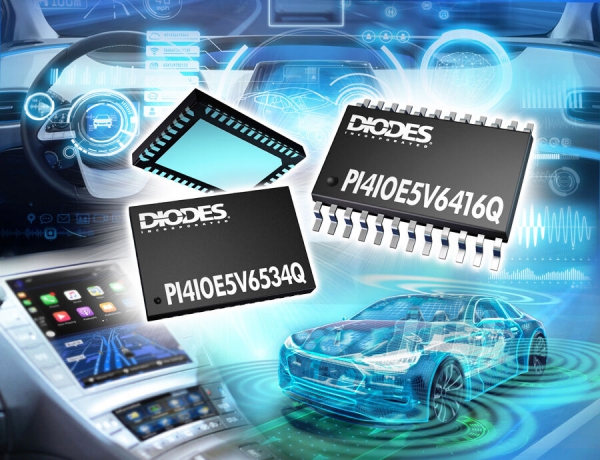About Diodes
Diodes Incorporated is a leading global manufacturer and supplier of high-quality application specific standard products within the broad discrete, logic, analog, and mixed-signal semiconductor markets. Diodes serves the consumer electronics, computing, communications, industrial, and automotive markets.
Diodes’ products include diodes, rectifiers, transistors, MOSFETs, protection devices, function-specific arrays, single gate logic, amplifiers and comparators, Hall-effect and temperature sensors, power management devices, including LED drivers, AC-DC converters and controllers, DC-DC switching and linear voltage regulators, and voltage references along with special function devices, such as USB power switches, load switches, voltage supervisors, and motor controllers. Diodes also has timing, connectivity, switching, and signal integrity solutions for high-speed signals.
Featured Products
AL5873Q
AL5873Q
AL5873Q
The AL5873Q is an automotive-compliant three-channel linear LED driver with PWM dimming and analog dimming control. Each channel can drive up to 250mA with a combined driving current up to 750mA. All three LED channels’ current of the AL5873Q are set by two reference resistors connected to the REF1 and REF2 pin. The AL5873Q regulates LED current for each channel, accurate down to ±4%, with excellent dimming performance. The AL5873Q enters standby mode to save power if no PWM signal is detected.
The AL5873Q monitors the temperature and reduces the LED current if its juncture temperature exceeds the threshold temperature. For improved system robustness the AL5783Q has input under voltage lock-out (UVLO), LED string-open /-short protection, and overtemperature protection (OTP) which are reported by a fault indicator (FAULTB) pin. The AL5873Q is available in TSSOP-16EP (Type DX) package.
Application(s)
- Automotive LED Inner Lamps
- Rear Light – Tail and Stop Light, Rear Turn Indicator, Parking Light, Fog Light, Reverse Light
Feature(s)
- AEC-Q100 Grade 1 Qualification
- Wide Input Voltage Range from 5V to 55V
- Each Channel Up to 250mA Current Capability
- Set Stop and Tail Current Independently Through 2 Resistors
- Switch LED Current Between Stop and Tail Function Automatically via FULL Input
- PWM Dimming via Both PWM Input and Power Supply
- Analog Dimming via ADIM Input
- Automatically Enter and Exit Standby Mode without Enable Pin
- Internal Protections:
- Input Under Voltage Lock-Out (UVLO)
- LED String Open Protection
- LED String Short Protection
- Over Temperature Protection (OTP)
- Thermal Fold-back if Chip Temperature Exceeds the Threshold
- Fault Reporting: UVLO, OTP, LED Open, and LED Short
- Totally Lead-Free & Fully RoHS Compliant
- Halogen and Antimony Free. “Green” Device
- The AL5873Q is suitable for automotive applications requiring specific change control; this part is AEC-Q100 qualified, PPAP capable, and manufactured in IATF 16949 certified facilities.
Videos
Contact Us
Leave Us a Message
Address
Rutronik Europe
Rutronik Europe
Rutronik Elektronische Bauelemente GmbH
Industriestrasse 2
D-75228 Ispringen
Phone
+49 (7231) 801-0





